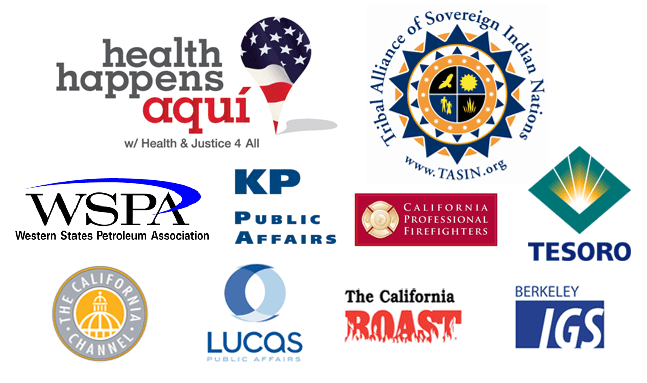CARBON FREE CALIFORNIA, March 8, 2017
Carbon Free California
March 8, 2017
CLICK HERE FOR CALIFORNIA CHANNEL’S VIDEO FROM THE EVENT
California continues to lead the nation – if not the world – in setting ambitious goals for carbon emission reductions. But many questions remain about how to achieve 40 percent GHG emission reductions in a state with a rapidly growing and diverse population and more than 27 million vehicles.
The state’s cap-and-trade program remains a centerpiece of efforts to reduce greenhouse gas emissions — a program that has won the support of much of the state’s business community, including the oil industry. But the program faces serious legal challenges and many question if it will be enough to meet new, more ambitious reduction goals. And, how will California’s leadership role be sustained with a new federal administration that appears hostile to climate programs in general?
Finally, the ultimate cost of climate change policies remains a fiercely debated subject that is certain to be front in center in the legislative, regulatory and legal battles that will decide the fate of California’s carbon-free ambitions.
Register now t0 save your seat! Registration includes lunch and all materials.
Join over two dozen industry experts, scientists, elected officials, regulators and journalists on Wednesday, March 8, to explore the answers to these and other questions.
AGENDA
8:30 a.m. – 9:15 a.m.
Check in, coffee
9:15 a.m. – 9:30 a.m.
Welcoming remarks
: Tim Foster, Open California, Rob Gunnison, Open California
9:30 a.m. – 10:30 a.m.
Panel 1
40% Reduction in GHGs by 2030: How Do We Get There?
California is a global leader in setting ambitious goals to fight climate change. In the 11 years since AB 32 was adopted with bipartisan support, how effective has it been in reducing carbon emissions, who is following our lead and what are the realistic prospects we will achieve 40 percent reductions by 2030? Gov. Brown wants to extend California’s cap-and-trade program via two-thirds votes in both houses of the Legislature — a move that ensures a major legislative battle in 2017 and a lasting program if approved. But agreeing to extend cap-and-trade is only part of the battle: Deciding what the program will look like and who will be the winners and losers will be central to this monumental climate policy decision.
Dave Jones, Insurance Commissioner; Catherine Reheis-Boyd, WSPA; Ross Brown, LAO; V. John White, CEERT
Moderator: Dan Morain, Sacramento Bee
10:50 am. – 11:50 a.m.
Panel 2
Market Mechanism vs. Command-and-Control
The debate over climate policy in California often pits command-and-control regulation of major carbon emissions versus market mechanisms like cap-and-trade. The environmental justice community and many regulators generally favor command-and-control regulations as an effective means of reducing emissions. In California, much of the business community, including the petroleum industry, favors market mechanisms like cap-and-trade as a more equitable and cost effective way to reduce those emissions. What are the differences, which strategy has the best hope of achieving the state’s ambitious targets and can they survive side by side?
Senator Henry Stern; Dorothy Rothrock CMTA; Mary Solecki, E2; Brent Newell, CRPE; Loren Kaye, California Chamber of Commerce;
Moderator: Chris Megerian, Los Angeles Times
Luncheon Keynote: Noon
Mary Nichols, Chair of the California Air Resources Board
Introduced by John Howard, Capitol Weekly
1:00 p.m. – 2:00 p.m. Panel 3
A Carbon Free Economy: Risks and Rewards of Cutting Carbon
The scientific community has reached an overwhelming consensus that man-made climate change is happening, but there is no such consensus about what to do about it. Those questions, which entail enormous economic impacts, are among the most difficult and contentious issues faced by lawmakers. But what are the real costs of cutting carbon? When a political jurisdiction like California decides to adopt carbon reduction regulations, what are the risks that higher energy costs could trigger major economic dislocation? And how do those costs stack up against the cost of little or no effective action to slash carbon emissions?
Rob Lapsley, CBRT; Kip Lipper, Senate staff; John Larrea, California League of Food Processors; Timothy O’Connor, Environmental Defense Fund
Moderator: Katy Murphy, San Jose Mercury News
2:15 p.m. – 3:15 p.m
Panel 4
Covering Climate Change: Media, Science and Public Policy
The role of the media is critical: Our views of climate change and climate policies are shaped largely by what we read and see in the media. But questions arise: How well does that coverage address the underlying science of climate change? How large a role does science really play in the public policy debate? Is serious news coverage of climate change drowned out by politics and partisanship?
Assemblyman Bill Quirk; Carolyn Whetzel, Bloomberg BNA; Melody Gutierrez, San Francisco Chronicle; James Bushnell, UC Davis
Moderator: Julie Cart, CalMatters
For information regarding registration, including fee waivers, contact Kathy Brown, 916 444 7665 or kathy.brown@capitolweekly.net
For information regarding sponsorship and underwriting opportunities, contact Tim Foster at Capitol Weekly, 916 612 2613 or [email protected]
For information regarding content or speakers for this event, contact John Howard at Capitol Weekly, 916 444 7665 or [email protected]
THANKS TO OUR SPONSORS: The California Endowment, The Tribal Alliance of Sovereign Indian Nations, Western States Petroleum Association, KP Public Affairs, TESORO, California Professional Firefighters, Lucas Public Affairs, The California Channel, The Institute of Governmental Studies and The California Center.

